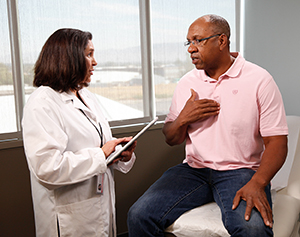Hip and Knee Post-Surgery Checklist

After surgery, there are steps you can take to help with your recovery. While in the hospital it's important to follow instructions from your surgeon, nurse, and other healthcare providers. This will help you be able to go home as soon as possible. Talk with the healthcare providers before leaving the hospital about help you may need at home. Once you are home, continue to rest, but also try to slowly get back to your normal activities. Check with your surgeon to find out when you can resume activities such as walking, lifting, exercise, and driving.
Call your surgeon if you have any questions about your recovery.
In the hospital
Managing pain
-
You’ll get medicine to control pain. You may be given medicine by mouth (oral), by injection, or into your vein (intravenous or IV).
-
Tell your nurse if the medicines don’t help control your pain or if the pain gets worse.
Preventing deep vein thrombosis (DVT)
This is a condition in which a blood clot forms in a deep vein, often in the leg. Part of the clot may break loose and travel to the lungs. This is called a pulmonary embolism. It's a serious condition and may cause death. People who have surgery have an increased chance of developing blood clots. To prevent clots, your surgeon will prescribe one or more of the following:
-
Blood-thinner (anticoagulant) medicine. This is a medicine that helps to prevent blood clots. It may be given to you before or right after surgery.
-
Compression stockings. These are elastic stockings that fit tightly around your legs. This helps keep blood flowing toward the heart, so that it's less likely to pool in the legs and cause a blood clot.
-
Getting out of bed and walking (ambulation). As soon as you’re able, you’ll be helped out of bed by your nurse. Moving around improves blood flow and helps prevent blood clots.
-
Exercises. Simple exercises while in bed or sitting in a chair can help prevent blood clots. Move your feet in a circle or up and down 10 to 30 times an hour to improve blood flow.
-
Sequential compression device (SCD) or intermittent pneumatic compression (IPC). These are special sleeves that are placed around the legs. They are connected to an electric pump. The pump inflates and deflates the sleeves. As the sleeves inflate, they gently squeeze the leg or foot muscles. This helps with blood flow and helps prevent blood clots. Remove the sleeves so that you don't trip or fall when you are walking, like when you use the bathroom or shower. If you need help removing the cuffs, ask the nurse or aid.
Nausea and vomiting
This is common after surgery. If you are having problems with nausea and vomiting, be sure to tell your nurse or surgeon.
Preventing pneumonia
To help clear your lungs and prevent pneumonia, you may be taught deep-breathing and coughing exercises. Follow your healthcare provider’s instructions on how to do the exercises and how often to do them.
Incision care
You will have a dressing over your incision. The dressing might be changed before you go home. To help prevent germs from getting into the incision, don't touch it. Before you go home, your nurse will teach you or a family member how to take care of your incision at home.
Blood tests
After surgery, you’ll likely have blood drawn. This is to make sure you’re healing well and aren’t developing problems, like infection, anemia, or high blood sugar (hyperglycemia).
At home
Here is what you can do at home:
-
Pain management. Take your pain medicines as directed, before the pain becomes severe. Don’t take medicine more often than prescribed. Overdose is dangerous. Taking pain medicine at night can help you sleep.
-
Preventing blood clots and pneumonia. DVT and pneumonia can still occur even after you go home. Follow the discharge instructions you were given in the hospital.
-
Incision care. Follow instructions you get in the hospital about when it’s safe to shower. Until then, keep the incision dry. Watch for signs of infection. Signs include increased redness, tenderness, swelling, drainage from the incision, or a fever of 100.4°F (38°C) or higher, or as directed by your healthcare provider.
-
Activity. At your follow-up visit, ask your surgeon when it’s safe to return to your regular activities. Slowly get back to exercise and other activities.
-
Returning to work. Going back to work depends on your surgery and the type of job you do. You and your surgeon will decide when you can return to work. It’s often 4 to 6 weeks after major surgery, and a few days after minor surgery.
-
Driving. Don't drive until your surgeon tells you that you can.
-
Get good nutrition. Healthy eating helps your body heal. If you had a special diet before surgery, ask your surgeon if you should stay on the same diet.
Follow-up appointment
My follow-up appointment is scheduled for:
__________________________________________________________
Call 911
Call 911 if you have the following symptoms that could mean a blood clot in the lungs:
Also call 911 if you have heavy or uncontrolled bleeding.
When to call your healthcare provider
Call your surgeon right away if you have any of the following:
-
Pain, swelling, and redness in your leg or arm. These symptoms may mean a blood clot.
-
Increased pain or pain that is not relieved with medicines
-
Drainage, redness, or swelling around the incision
-
Incision opens up (cover it with a clean dressing or cloth)
-
Severe nausea and vomiting
-
Fever of 100.4°F ( 38°C) or higher, or as directed by your healthcare provider